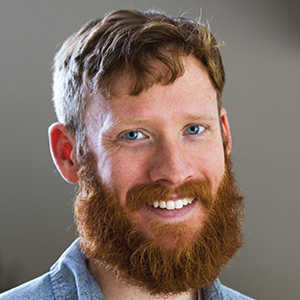Summer food science
This is a story about the biochemistry of some of the foods that make summer delicious--most of which are fruits and vegetables. For those of you bound for a summertime holiday weekend, we dug into recent research into the yummy foods you might serve at a socially distant picnic.
Fruits and veggies in general

It’s in the bag: The plant hormone ethylene is key to fruit ripening. You’ve probably heard that you can make fruit ripen faster by placing it in a paper bag, raising the concentration of ethylene. This review in the Journal of Biological Chemistry covers what we know about how cells sense and respond to the hormone and how it might be harnessed for agriculture.
Oh, I see! No discussion of the biochemistry of fruits and vegetables would be complete without a nod to the fluorescent protein family named for produce that includes mCherry, tdTomato, and mOrange! Click through for a look at just a few of the many ways these fluorescent proteins are used to understand biochemistry.
Corn

From tropical crop to temperate staple: Once upon a time, corn was a tropical crop, hailing from the Central Balsas River Valley of southern Mexico before humans domesticated it around 9,000 years ago. Part of that domestication was an adaptation to more temperate climates that entailed change in the expression of protein and mRNA. To get a full picture of how domestication altered maize genetics, researchers at the National Maize Improvement Center of China conducted an integrative analysis of proteomic and transcriptomic changes in a maize association panel. Their findings, published in the journal Molecular & Cellular Proteomics, suggest that the proteome evolved under a greater evolutionary constraint than the transcriptome did while maize was adapting from tropical to temperate regions.
Corn rinds in dry times: Maize being the staple that it is, researchers at France’s UMR de Génétique Végétale examined how the plant’s phosphoproteome responds to drought events. By combining a physiological approach and a quantitative phosphoproteomic analysis, their work, published in the journal Molecular & Cellular Proteomics, provides new insights into the in-vivo early phosphorylation events triggered by rapid changes in plant water status and their possible involvement in plant growth-related processes.
Strawberries

AsESing the defensive secrets of a strawberry fungus: Anthracnose, a type of fungal rot, can devastate strawberry yields. By ramping up the plant’s defensive activity, however, scientists may be able to induce broad resistance against a range of fungal pathogens in the bright berries. In this paper published in the Journal of Biological Chemistry, researchers in Argentina purified and characterized a pathogen protein called AsES, which elicits a defensive immune response in the berries. Their findings may contribute to developing disease biocontrol strategies that use strawberries’ innate immunity.
Use a straw: Perhaps you like your strawberries in smoothie form? In this study in the Journal of Lipid Research, by researchers at the Mayo Clinic, participants consumed almost three-quarters of their daily calories in strawberry smoothie form. Mmmmm.
Cantaloupe
Here’s the scoop: Orange melons, better known in the U.S. as cantaloupes, are rich in β-carotene that can be metabolized into vitamin A. In this study in the Journal of Lipid Research, scientists investigated how intestinal cells take up metabolites of β-carotene.

Tomatoes
High-stakes structure: Tomatoes, like many other plants, use photoreceptors called phytochromes to sense far-red light and respond to temperature. In a structural biophysics article in the Journal of Biological Chemistry, researchers reported the crystal structure of an enzyme that converts a precursor molecule used for photosynthesis into phytochrome pigments.
Hardy heirloom: How do tomato seedlings survive an early-season cold snap? It’s a trick question; a gardener could tell you that most don’t. But among strains that can tolerate some cold, it’s thanks to major changes to signaling. This Molecular & Cellular Proteomics article compared the cold-responsive phosphoproteome in an heirloom varietal called the greengage tomato to more wimpy strains to understand what makes the greengage so hardy.
Fresh herbs

From the ground up: If your summer would be incomplete without a big batch of pesto made from fresh basil and plenty of olive oil, you might be interested in the lipophilic, or oil-soluble, compounds produced in the basil leaves. In this article in the Journal of Biological Chemistry, researchers put mortar and pestle to a different use, grinding up leaves to carry out a detailed biochemical analysis of a certain type of flavone and pinpoint the enzyme responsible for synthesizing it.
Special sprigs: Why do basil, peppermint and marjoram all taste differently? Leaves from all three plant species, which belong to the mint family, have plenty in common but produce distinct sets of diterpenes, diverse 20-carbon molecules that impart flavor and aroma. In this article in the Journal of Biological Chemistry, researchers searched the genomes of 48 mint family species to find new diterpene synthase enzymes that help explain their unique flavor profiles.
Sweet(s)

And sweat: The insulin-responsive glucose transporter type 4 (GLUT4) protein was discovered in 1988. This Journal of Biological Chemistry review covers three decades of research made possible by the discovery, which clarified how insulin and exercise regulate glucose transport into muscle and fat cells.
Sip it for science: Milkshakes are a favorite research tool over at the Journal of Lipid Research. Here’s just one of the many metabolism studies that introduced dietary fat with a milkshake in order to determine how genetic variation affects people’s metabolism.
Enjoy reading ASBMB Today?
Become a member to receive the print edition four times a year and the digital edition monthly.
Learn moreGet the latest from ASBMB Today
Enter your email address, and we’ll send you a weekly email with recent articles, interviews and more.
Latest in Science
Science highlights or most popular articles

E-cigarettes drive irreversible lung damage via free radicals
E-cigarettes are often thought to be safer because they lack many of the carcinogens found in tobacco cigarettes. However, scientists recently found that exposure to e-cigarette vapor can cause severe, irreversible lung damage.

Using DNA barcodes to capture local biodiversity
Undergraduate at the University of California, Santa Barbara, leads citizen science initiative to engage the public in DNA barcoding to catalog local biodiversity, fostering community involvement in science.

Targeting Toxoplasma parasites and their protein accomplices
Researchers identify that a Toxoplasma gondii enzyme drives parasite's survival. Read more about this recent study from the Journal of Lipid Research.

Scavenger protein receptor aids the transport of lipoproteins
Scientists elucidated how two major splice variants of scavenger receptors affect cellular localization in endothelial cells. Read more about this recent study from the Journal of Lipid Research.

Fat cells are a culprit in osteoporosis
Scientists reveal that lipid transfer from bone marrow adipocytes to osteoblasts impairs bone formation by downregulating osteogenic proteins and inducing ferroptosis. Read more about this recent study from the Journal of Lipid Research.

Unraveling oncogenesis: What makes cancer tick?
Learn about the ASBMB 2025 symposium on oncogenic hubs: chromatin regulatory and transcriptional complexes in cancer.



